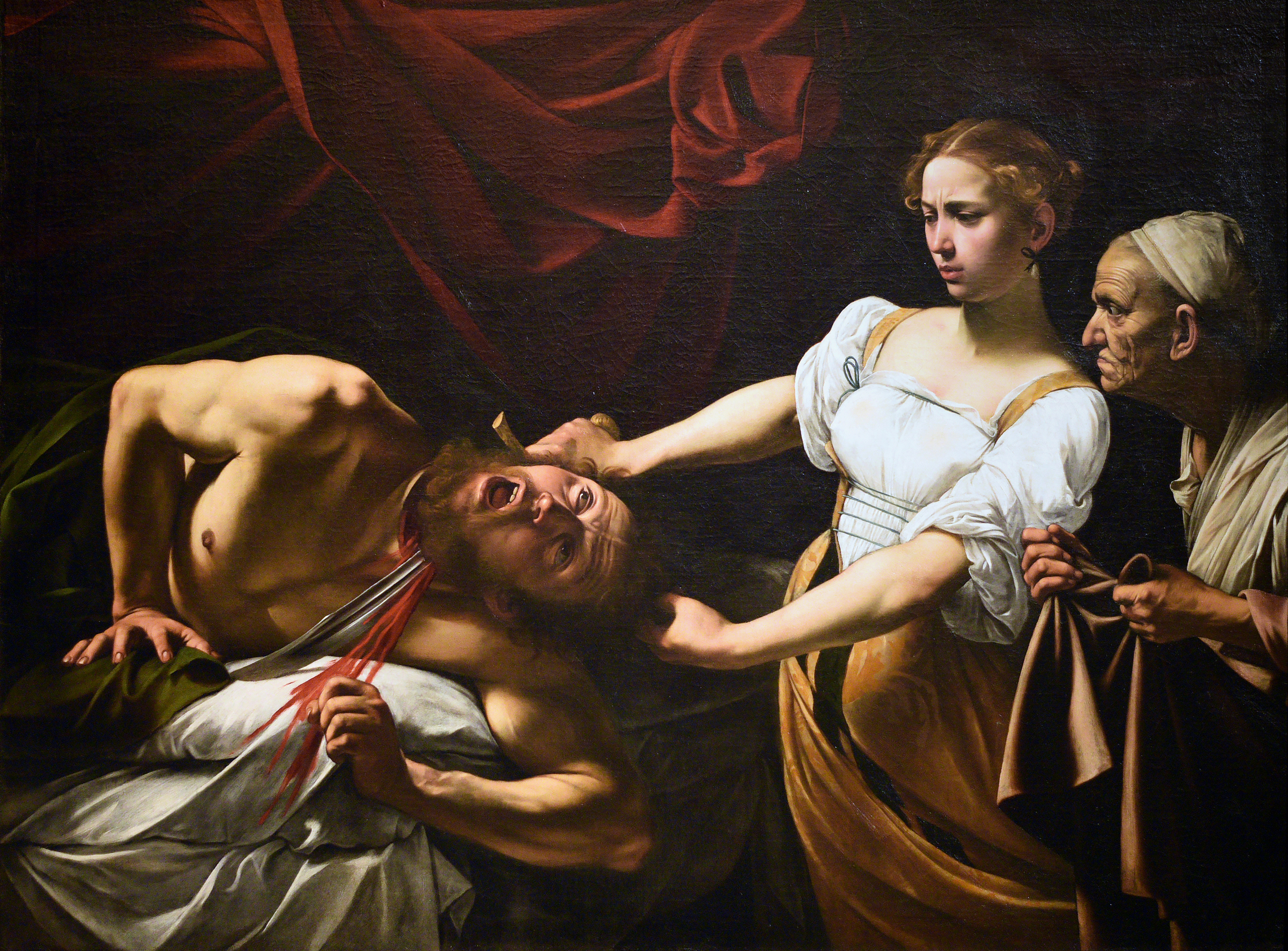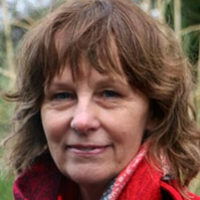
Born 450 years ago, on September 29, 1571, Caravaggio lived during the Counter Reformation, and he worked in Rome. The art form of that time, with a specific political function, was the Baroque. Caravaggio is most frequently considered a Baroque artist. How true is this?
The Reformation
The development of the new middle class of traders, merchants, artisans—the bourgeoisie—brought with it the dawn of the modern, capitalist, era. The artistic expression of this new era of middle-class confidence was the Renaissance. The Reformation, which began in Germany in 1517, was its religious expression. This new class needed to legitimize its claim to political power at all levels. Protestantism replaced the strongly hierarchical older, feudal Church with one that did away with the middle-men structures. This reflected the new thinking that challenged the established political hierarchy, and aspired, theoretically at least, to political power for all.
The Reformation had forced Catholicism to retreat in many parts of Europe. However, outside of Britain, no successful bourgeois revolution consolidated the growing economic power of the middle class that would have eliminated feudalism. Instead, feudal absolutism emerged. The nobility remained the ruling class, although increasingly capitalist forms began to shape economic life.
The Counter-Reformation
The Counter-Reformation is the constellation of mainly political and military actions of Catholicism, between 1555 and 1648, aiming to reverse the conditions created by the Reformation in central Europe. Its leading force was the Jesuits. The Counter-Reformation led to the resurgence of Catholicism, to significant shifts in political power in Europe, and to the reclamation of Austria, Bohemia, and Poland for Catholicism. The Counter-Reformation and the Baroque went hand in hand. If the Renaissance had been a violent time, the Counter-Reformation was even more so.
The Baroque
The arts reflected the disparate character of this age. The purpose of the Baroque was to glorify the power and external splendor of the absolute state. The ruling class deluded itself into a fullness of power that it had long since ceased to possess. With this came an unprecedented class differentiation in art. In addition to the ruling culture of the nobility, bourgeois-democratic and upper-middle-class forms of culture evolved. While the interests of the upper-middle class, associated with the nobility, are reflected in the Baroque, democratic tendencies were expressed in realist works of art.

Caravaggio
In 1591, a young painter from northern Italy came to Rome. His name was Michelangelo Merisi, who took the name Caravaggio after his birthplace. He revolutionized art in Europe. Caravaggio’s sense of reality, his this-worldly sensuality, reestablished and further developed the realism of the early Renaissance.
Sick Bacchus (1593), an early self-portrait of Caravaggio, then aged 22, already confidently departs from convention.

It is a disconcerting picture. Bacchus, pagan god of revelry, intoxication, and sexual promiscuity is depicted as one who may be a victim of all this. He looks weary, even exploited. The vine leaves and grapes, promising intoxication, and gratification, are offered as though to a customer. The white himation resembles a sheet. The smile seems fake. There is a suggestion of an unhappy male sex worker. This depicts a very human, true to life pagan deity.
Painted around the same time, Boy Bitten by a Lizard depicts another ordinary person, without signs of rank or status, reacting to a sudden shock.
Again, there is a hint of a sexually exploited young male. Signs are the state of partial undress and the rose behind his ear. While the rose indicates romantic love, jasmine, also included, was a traditional symbol of desire. While the youth reaches for cherries, he is bitten by a lizard (real lizards don’t have teeth). Both pictures must be seen in the context of Caravaggio’s target audience—the Roman clergy.

The genre picture
Caravaggio was the first to develop genre painting, showing the lives of ordinary people. Two early examples of this are The Gypsy Fortune-Teller (1594) and The Cardsharps (1594). They focus on the lower social orders, which became an important model for him and heightened the realism of all this work.
Both pictures were startlingly original in late 16th-century Europe, foregrounding on canvas the class that had never been considered a worthy aesthetic subject—tricksters.
In The Gypsy Fortune-Teller, the young woman is seen removing the naïve nobleman’s ring as he gazes into her eyes. Already, Caravaggio’s insistence on realism in both subject matter and depiction is clear: the young woman has quite dirty fingernails! Such attention to realist detail shocked his audience.

The Cardsharps also laughs at how a young gentleman is tricked. The opulently dressed young gentleman has come to the notice of card tricksters in a gambling den. Their yellow-and-black costumes hint at wasps closing in on him. The backgammon board at the edge of the table suggests he has already lost money to them. The narrative of the picture implies that the gentleman has been successfully persuaded to try and regain his losses. Yet it is hopeless. The viewer sees more than he does: spare cards behind the back of his opponent, with an accomplice signaling in code how to ensure a winning hand. Once again, there is little doubt as to who is streetwise, and who the fool.
Another famous example of Caravaggio’s realism, of his bond with the ordinary people, is Judith Beheading Holofernes (lead article image at top). Judith beheaded Holofernes because his army had besieged the city of Bethulia, almost taking it. Holofernes had attempted to force the Jews to worship the Assyrian king Nebuchadnezzar instead of Jehovah. Judith’s deed in defense of her people and their one true God was highly topical. The fight against “heresy” by any means was central to Catholic thinking during the Counter-Reformation, with the Pope’s authority strengthened, the church in Rome centralized, and the Jesuits, as defenders of the faith, set out to convert heretics or kill them. The most shocking example of such persecution of heretics was the Bartholomew massacre of thousands of Huguenots on the 23rd and 27th of August 1572. In 1600, Giordano Bruno was burnt to death at the stake.

In his depiction of Judith, Caravaggio used Fillide Melandroni, a well-known courtesan, as a model. She was instantly recognizable to the people of Rome.
Religiously motivated killing takes center stage in this painting. Renaissance artists had focused on beauty of the human form and nature, not so much human suffering. During the Counter-Reformation, torment and violence had a considerable impact on art, as they had in everyday life. Caravaggio painted the moment when Holofernes is beheaded, his head only half-severed from his body. His eyes opened wide with horror, his mouth screaming. Severed heads nailed to the Ponte San Angelo over the Tiber were a common sight in Rome.
Judith is painted in the best clothes of a woman of the people. Caravaggio also departs from Biblical tradition in showing the maid alongside her mistress. This is an intensely realistic representation of a working woman. He painted directly from life, showing the wrinkles on the face and working hands of this woman. In fact, she is shown to hold up her apron in readiness to receive and dispose of the head. Caravaggio’s contemporaries deemed such portrayal “too natural.” The maid really stands out in the picture, contrasting strongly with the more idealized beauty of Judith, and even of Holofernes. She is chosen and painted as a third focal point, not to be missed.
In this painting, Carravagio uses the light/ dark contrast for the first time, that was to become characteristic of his work: figures, accentuated by artificial light, standing out against a dark background. In this technique, Caravaggio prefigures Rembrandt.

Caravaggio’s 1602 painting was originally intended for the main altar of the Cappella Contarelli in San Luigi dei Francesi in Rome. It is a picture that famously exists in two versions.
In this first painting, Saint Matthew sits on a scissors chair, dressed in short workman’s clothes, leaving his arms and legs bare. His legs are crossed and his left foot almost breaks through the painting, at the point, where a priest would hold up the host at Mass. To make matters worse, Matthew is flat-footed with dirt under his toenails. He seems to have difficulty writing, his hands unused to holding the quill, as he peers onto the pages; even his writing appears too big. The angel helps him write the Gospel.
The viewer looks on the scene from above. It seems, Caravaggio gave Matthew the likeness of Socrates, often depicted as a humble man, who said that the only true wisdom lies in knowing you know nothing. The clergy rejected Caravaggio’s interpretation of the saint as an illiterate peasant and objected to the intimate relationship between the apostle and the angel holding his hand. He had to paint a second picture.
Caravaggio’s second painting is less realistic. Matthew is no longer wearing working clothes. Instead, he is biblically dressed and towers above the viewer. The angel hovers over him, there is no physical contact, and Matthew writes by himself.
Caravaggio refused, wherever possible, to bow to Counter-Reformation diktat. Many of his works were rejected because of his intense realism, his depiction of ordinary, working people in his paintings. He used real-life models for his religious figures, famously Roman prostitutes as models for his Madonnas. One of the well-known courtesans, Anna Bianchini, drowned, possibly murdered, in the Tiber in 1604. Caravaggio had been commissioned to paint Death of the Virgin and, according to legend, he used Anna’s bloated body as the model for the dead Mary.

The painting caused an outcry because the identity of Mary was so clear. Her bare feet, her red dress, and the realism of death, all make for an unholy appearance, unfit for a devotional picture of the mother of Christ. An early biographer suggests that Caravaggio painted the murderer into the picture: the dark, bearded young man, looking away from the scene.
Caravaggio’s sense of realism stood in the way of painting idealized forms. As we have seen, even in his religious paintings, he used real-life models from ordinary people. These were the people that mattered, that life was all about, as far as Caravaggio was concerned.
Caravaggio worked mainly for Roman clergy. Consequently, most of his works have religious themes, yet they are profoundly humanist. This painter rejected the highly ornamental, empty, and often triumphalist Baroque manner. He painted everyday reality, the ordinary people he encountered on the streets of Rome, including the most deprived—beggars, prostitutes, criminals. Even his religious paintings are always linked to the violence and deprivation Caravaggio saw all around him. He was unwilling to look the other way. This is the life we encounter on Caravaggio’s canvases, this is his time that he could not escape from. Life around him was full of pain, and Caravaggio’s insistence on realism highlights this. And for that reason, he cannot be counted as a Baroque painter. The realists of the following centuries could justifiably refer to him.
When Caravaggio killed a man in a quarrel on May 28, 1606, he was forced to flee Rome, and spent the rest of his life on the run, spending time in Naples, Malta, Messina, Palermo—leaving behind masterpieces that lastingly influenced 17th-century European art. He died in exile, soon after arriving in Porto Ercole, on July 18 or 19,1610, aged only 38, and was buried in an unmarked grave.












Comments